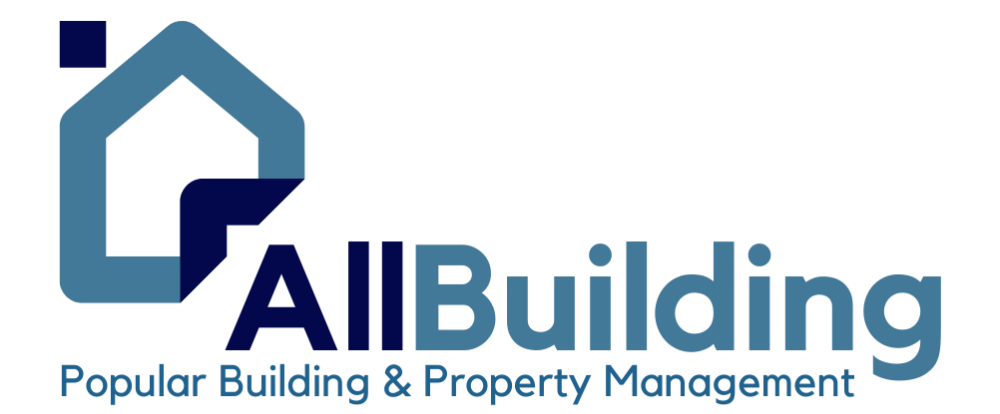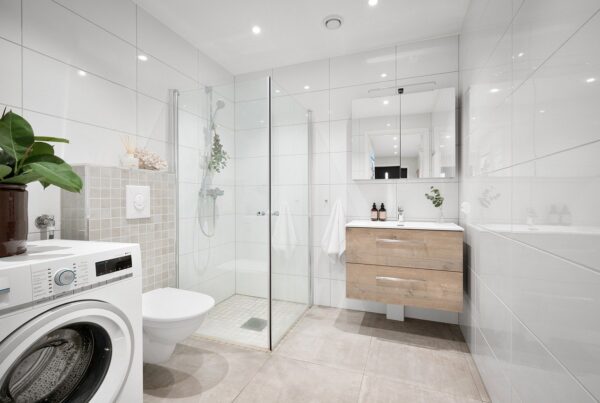A bathroom renovation is a transformative journey, where dreams of a serene and stylish sanctuary become a reality. However, the path to success is paved with meticulous planning, strategic decision-making, and a keen eye for detail. This comprehensive guide will unveil the secrets to a flawless bathroom installation, ensuring that your vision is brought to life with precision and finesse.
Embarking on the Bathroom Renovation Adventure
The mere thought of embarking on a bathroom renovation can be both exhilarating and daunting. On one hand, the prospect of transforming a utilitarian space into a personal oasis ignites a sense of excitement. On the other, the multitude of decisions and intricate details involved can seem overwhelming. Embrace this adventure with an open mind and a willingness to explore the boundless possibilities that lie ahead.
Defining Your Bathroom Vision
Before diving headfirst into the renovation process, take a step back and carefully define your vision for the new bathroom. This vision will serve as the guiding light, shaping every subsequent decision and ensuring that the final result aligns seamlessly with your aspirations. Consider your lifestyle, aesthetic preferences, and functional requirements, and let these elements inform the design direction.
Gather inspiration from various sources, such as design magazines, online platforms, and even real-life examples from friends and family. Create a mood board or a digital folder to collate these ideas, allowing them to coalesce into a cohesive vision that resonates with your unique style.
Establishing a Realistic Budget
As with any home improvement project, setting a realistic budget is crucial for a successful bathroom renovation. Determine the financial resources you can allocate to this endeavor and establish a comprehensive budget that accounts for all potential expenses, including materials, labor, permits, and unforeseen contingencies.
Research the costs associated with various materials, fixtures, and finishes to gain a better understanding of their impact on your overall budget. Remember, quality often comes at a premium, but investing in durable and high-quality products can yield long-term benefits and cost savings in the long run.
Mastering the Art of Bathroom Design
The design phase of a bathroom renovation is where creativity and functionality converge. It is during this stage that you will make critical decisions that shape the aesthetic appeal and functionality of your new bathroom.
Optimizing Space and Layout
Effective space planning is the cornerstone of a well-designed bathroom. Carefully assess the available square footage and consider how each element, from the vanity to the shower enclosure, will interact within the allotted space. Explore innovative layout solutions that maximize functionality while creating a sense of openness and flow.
Embrace the principles of ergonomics and accessibility, ensuring that the placement of fixtures and amenities is both comfortable and user-friendly. Consider the needs of all potential users, whether they are family members, guests, or individuals with mobility challenges.
Selecting Stylish and Durable Materials
The materials you choose for your bathroom renovation will not only define the aesthetic appeal but also contribute to the longevity and functionality of the space. Explore a wide range of options, from classic ceramic tiles to luxurious natural stone, and consider their respective durability, maintenance requirements, and visual impact.
Incorporate water-resistant and moisture-resistant materials in areas prone to high humidity, such as showers and tub surrounds. This will help prevent the buildup of mold and mildew, ensuring a hygienic and long-lasting bathroom environment.
Embracing Sustainable and Energy-Efficient Solutions
In today’s environmentally conscious world, incorporating sustainable and energy-efficient solutions into your bathroom renovation is not only responsible but also economically prudent. Explore water-saving fixtures, such as low-flow showerheads and dual-flush toilets, to reduce your water consumption and lower utility bills.
Consider incorporating energy-efficient lighting solutions, such as LED bulbs or natural light sources like skylights or strategically placed windows. These measures will not only contribute to a greener footprint but also create a warm and inviting ambiance within your bathroom sanctuary.
Navigating the Complexities of Plumbing and Electrical Systems
While aesthetics and design are undoubtedly crucial, the technical aspects of plumbing and electrical systems cannot be overlooked. These intricate systems form the backbone of your bathroom’s functionality and require meticulous planning and execution.
Plumbing Considerations
Plumbing is a critical component of any bathroom renovation, as it involves the intricate network of pipes and fixtures that control water flow and drainage. Engage the services of a licensed and experienced plumber to ensure that your new bathroom adheres to local building codes and regulations.
Carefully consider the placement of plumbing fixtures, such as toilets, sinks, and showers, to optimize water flow and minimize the need for extensive pipe rerouting. If significant changes to the existing plumbing system are required, be prepared for potential structural modifications and associated costs.
Electrical Requirements
A well-lit and properly wired bathroom not only enhances functionality but also contributes to a safe and comfortable environment. Work closely with a qualified electrician to assess the electrical requirements of your new bathroom, taking into account the placement of lighting fixtures, outlets, and any additional electrical components, such as heated towel racks or ventilation fans.
Ensure that all electrical installations comply with local building codes and safety standards, prioritizing the protection of your home and its occupants. Consider incorporating energy-efficient lighting solutions and smart home technology to elevate the convenience and sustainability of your bathroom.
The Importance of Ventilation and Moisture Control
Proper ventilation and moisture control are often overlooked aspects of bathroom design, yet they play a crucial role in maintaining a healthy and comfortable environment. Neglecting these factors can lead to the buildup of moisture, mold, and mildew, compromising the integrity of your bathroom and posing potential health risks.
Installing an Effective Bathroom Ventilation System
An effective ventilation system is essential for maintaining air quality and preventing moisture accumulation in your bathroom. The installation of a high-quality bathroom exhaust fan or ventilation system is a worthwhile investment that will ensure the efficient removal of moisture-laden air and odors.
When selecting a ventilation system, consider factors such as the size of your bathroom, the fan’s extraction capacity, and the ease of installation and maintenance. Proper placement and ducting are also crucial for maximizing the system’s effectiveness.
Incorporating Moisture-Resistant Materials and Finishes
In addition to ventilation, incorporating moisture-resistant materials and finishes throughout your bathroom can further mitigate the risk of moisture-related issues. Choose tile, stone, or solid surface materials for floors and walls, as they are inherently resistant to moisture and easy to clean.
Consider incorporating waterproof membranes or moisture-resistant drywall in areas prone to high humidity, such as showers and tub surrounds. These measures will help prevent water damage and extend the longevity of your bathroom’s finishes.
Hiring Professional Expertise for a Seamless Installation
While a bathroom renovation may seem like a DIY project, the complexity involved often necessitates the expertise of professional contractors and tradespeople. Enlisting the right team can mean the difference between a flawless installation and a potential disaster.
Selecting Reputable and Skilled Professionals
When it comes to hiring professionals for your bathroom renovation, it is essential to do your due diligence. Research local contractors, plumbers, electricians, and tilers, and seek recommendations from trusted sources, such as friends, family, or online review platforms.
Look for professionals with a proven track record of successful bathroom installations, and don’t hesitate to request references or portfolio samples. Experienced professionals not only bring technical expertise but also valuable insights and creative solutions to potential challenges.
Effective Communication and Collaboration
Successful bathroom renovations rely heavily on effective communication and collaboration between you and your hired professionals. Clearly articulate your vision, expectations, and concerns from the outset, and be open to their suggestions and recommendations based on their expertise.
Establish open lines of communication throughout the project, addressing any issues or concerns as they arise. Regular progress updates and site visits can help ensure that the installation is proceeding according to plan and aligns with your desired outcome.
Adhering to Building Codes and Regulations
Bathroom renovations are subject to a variety of building codes and regulations designed to ensure the safety and functionality of the space. Failure to comply with these guidelines can result in costly fines, delays, or even the need to redo portions of the work.
Understanding Local Building Codes
Before embarking on your bathroom renovation, familiarize yourself with the local building codes and regulations that apply to your project. These codes may cover areas such as plumbing, electrical, ventilation, and accessibility requirements, among others.
Consult with your hired professionals or local building authorities to ensure that your renovation plans comply with all relevant codes. They can provide valuable guidance and insights to help you navigate the complex web of regulations and ensure a smooth and compliant installation process.
Obtaining Necessary Permits and Inspections
Depending on the scope of your bathroom renovation, you may be required to obtain permits from your local building authorities. These permits serve as official approvals for the proposed work and ensure that your project meets all necessary safety and quality standards.
Additionally, be prepared for various inspections throughout the renovation process. These inspections are typically conducted by certified inspectors and are designed to verify that the work adheres to building codes and regulations. Cooperate fully with these inspections and promptly address any identified issues or concerns.
Embracing Sustainable and Eco-Friendly Practices
In today’s environmentally conscious world, incorporating sustainable and eco-friendly practices into your bathroom renovation is not only responsible but also economically prudent. By embracing these principles, you can create a space that is both beautiful and environmentally responsible.
Water Conservation Measures
Water conservation is a crucial aspect of sustainable bathroom design. Consider installing low-flow showerheads, dual-flush toilets, and water-efficient faucets to reduce your water consumption and lower utility bills. These fixtures not only save water but also contribute to a greener footprint.
Explore the possibility of incorporating greywater recycling systems, which capture and reuse water from sinks, showers, and tubs for non-potable purposes, such as landscape irrigation or toilet flushing. This innovative approach can significantly reduce your overall water usage.
Energy-Efficient Solutions
Energy efficiency is another key component of sustainable bathroom design. Opt for energy-efficient lighting solutions, such as LED bulbs or natural light sources like skylights or strategically placed windows. These measures can significantly reduce your energy consumption and associated costs.
Consider incorporating smart home technology, such as programmable thermostats or motion-sensing lighting controls, to further enhance energy efficiency and convenience within your bathroom.
Eco-Friendly Materials and Finishes
When selecting materials and finishes for your bathroom renovation, prioritize eco-friendly options that have a lower environmental impact. Look for products made from recycled or sustainable sources, such as bamboo flooring, recycled glass tiles, or natural stone.
Additionally, consider the embodied energy and carbon footprint associated with the production and transportation of these materials. Opting for locally sourced or regionally manufactured products can help reduce your project’s overall environmental impact.
Maximizing Functionality and Accessibility
A well-designed bathroom should not only be aesthetically pleasing but also highly functional and accessible for all users. By incorporating thoughtful design elements and adhering to accessibility guidelines, you can create a space that caters to diverse needs and enhances the overall user experience.
Ergonomic Considerations
Ergonomics plays a crucial role in ensuring that your bathroom is comfortable and user-friendly. Consider the height and placement of fixtures, such as vanities, mirrors, and towel racks, to minimize strain and promote ease of use.
Incorporate features like grab bars, non-slip flooring, and curbless showers to enhance safety and accessibility, particularly for individuals with mobility challenges or aging family members.
Universal Design Principles
Universal design principles aim to create spaces that are inclusive and usable by people of all ages and abilities. When planning your bathroom renovation, consider incorporating elements such as wider doorways, accessible countertop heights, and adjustable shower heads to accommodate a diverse range of users.
By embracing universal design principles, you not only future-proof your bathroom but also create a welcoming and inclusive environment that promotes independence and dignity for all.
Maximizing Return on Investment
While a bathroom renovation is primarily focused on enhancing your living experience, it can also contribute to the overall value of your home. By making strategic choices and prioritizing high-impact areas, you can maximize your return on investment (ROI) and potentially increase your property’s resale value.
Identifying High-Impact Areas
Certain areas of a bathroom renovation tend to have a higher impact on perceived value and ROI. Focus your attention and resources on these high-impact areas, such as updating fixtures, replacing outdated tile or countertops, and incorporating modern lighting solutions.
Investing in quality materials and finishes that are both aesthetically pleasing and durable can also contribute to a higher perceived value and a longer-lasting bathroom renovation.
Considering Resale Value
If you plan to sell your home in the future, consider the preferences and expectations of potential buyers when planning your bathroom renovation. While personalization is important, it’s also crucial to strike a balance between unique design elements and broad appeal.
Opt for timeless and neutral color schemes, classic fixtures, and versatile layouts that can appeal to a wide range of buyers. Additionally, prioritize updates that align with current market trends and buyer preferences in your local area.
Embracing the Joy of a Bathroom Sanctuary
A bathroom renovation is not merely a functional endeavor; it’s an opportunity to create a personal sanctuary, a space where you can unwind, rejuvenate, and escape the stresses of daily life. Embrace this journey with a sense of joy and creativity, and let your unique style and personality shine through in every aspect of the design.
Incorporating Personal Touches
While adhering to design principles and functional considerations is essential, don’t forget to infuse your bathroom with personal touches that reflect your unique style and personality. Whether it’s a statement piece of artwork, a carefully curated collection of decorative accessories, or a luxurious freestanding bathtub, these personal touches can transform your bathroom into a truly special and personalized retreat.
Creating a Serene and Relaxing Ambiance
A bathroom sanctuary should be a haven of tranquility and relaxation. Incorporate elements that promote a sense of calm and serenity, such as soothing color palettes, natural materials like stone or wood, and soft lighting that creates a warm and inviting atmosphere.
Consider incorporating aromatherapy elements, such as essential oil diffusers or scented candles, to further enhance the sensory experience and create a truly rejuvenating environment.
Conclusion: Embracing the Transformative Power of a Bathroom Renovation
A bathroom renovation is a transformative journey that transcends mere functionality. It is an opportunity to create a space that not only meets your practical needs but also reflects your personal style, embraces sustainable practices, and elevates your overall living experience.
By following the tips and insights outlined in this comprehensive guide, you can navigate the complexities of a bathroom installation with confidence and precision. From defining your vision and establishing a realistic budget to selecting the right materials and professionals, each step is a building block towards achieving a flawless and rewarding renovation.
Embrace the challenges and embrace the joy of this transformative process, for in the end, you will have created a sanctuary that not only enhances the value of your home but also enriches your daily life. So, embark on this journey with enthusiasm, and let your bathroom renovation be a testament to your dedication, creativity, and commitment to creating a space that truly reflects your unique vision.




